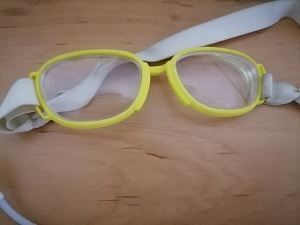9 . What Your Parents Teach You About Hobs And Ovens
Understanding Hobs and Ovens: A Comprehensive Guide for Cooking Enthusiasts
The kitchen is typically regarded as the heart of the home, where culinary developments come to life. 2 necessary parts of any kitchen are the hob and the oven. While they are both important for cooking and cooking, numerous property owners might not totally understand the differences, performances, and different types available in the market today. In this short article, we will explore these home appliances in detail, helping you make informed decisions for your culinary needs.
TabulationWhat is a Hob?1.1 Types of Hobs1.2 Benefits of Different Hob TypesWhat is an Oven?2.1 Types of Ovens2.2 Benefits of Different Oven TypesPicking the Right Hob and Oven for Your KitchenFrequently Asked Questions (FAQs)ConclusionWhat is a Hob?
A hob, typically referred to as a cooktop, is a cooking surface area that you position pots and pans on to prepare food. It includes a variety of heating aspects and is frequently set up on counter tops. In modern kitchens, hobs are available in different designs, innovations, and functionalities.
1.1 Types of Hobs
There are a number of types of hobs readily available in the market:
TypeDescriptionGas HobUses gas burners for cooking, using precise temperature control.Electric HobOperates using electrical heating elements, commonly seen in strong or glowing forms.Induction HobUtilizes electromagnetic fields to heat pots and pans straight, promoting energy performance.Ceramic HobFunctions a smooth glass top, utilizing electric coils below the surface area.Solid Plate HobStandard electric hobs with exposed metal plates that warm up.1.2 Benefits of Different Hob Types
Gas Hobs:
Quick cooling and heating.Visual flame control for accurate cooking.
Electric Hobs:
Even heating; perfect for simmering and boiling.Easy to clean, specifically flat surfaces.
Induction Hobs:
Energy-efficient as just the pot heats up.Security features, such as automatic shut-off.
Ceramic Hobs:
Attractive aesthetic appeals with a smooth finish.Even surfaces for simple cleaning.
Solid Plate Hobs:
Cost-effective and durable.Helpful for fundamental cooking needs.What is an Oven?
An oven is a kitchen appliance used for baking, roasting, and broiling food. Ovens can be standalone systems or built into kitchen cabinets, providing various cooking approaches that can boost or change active ingredients.
2.1 Types of Ovens
Similar to hobs, there are multiple kinds of ovens, each with its benefits:
TypeDescriptionTraditional OvenOperates with heating elements, ideal for baking.StoveUses fans to flow hot air, cooking food uniformly and rapidly.Microwave OvenCooks food utilizing electro-magnetic radiation; perfect for reheating.Steam OvenUses steam to cook food, maintaining moisture and nutrients.Wall OvenBuilt into the wall, providing benefit and visual appeal.2.2 Benefits of Different Oven Types
Conventional Ovens:
Simple to use with no complex settings.Versatile for various cooking methods.
Convection Ovens:
Faster cooking times due to air blood circulation.Improved browning and crisping for baked products.
Microwave Ovens:
Quick cooking or reheating of food.Energy-efficient for low-volume cooking.
Steam Ovens:
Health-conscious cooking that maintains nutrients.Exceptional for baking bread and cooking vegetables.
Wall Ovens:
Convenient placement; saves area.Less bending required to access cooking meals.Selecting the Right Hob and Oven for Your Kitchen
When choosing a hob and oven, aspects such as space, cooking style, and personal preferences ought to be considered. Here's an easy guide to assist you choose:
Factors to ConsiderCooking Needs: Evaluate your cooking practices. Do you frequently bake, or is stovetop cooking more common?Space Availability: Measure your readily available kitchen space. Some hobs or ovens might need more space than others.Fuel Type: Decide between gas and electric, based upon accessibility and individual choices.Spending plan: Determine what you're ready to spend and find options within that variety.Quick TipsPrioritize Efficiency: Look for energy-efficient models to decrease long-lasting expenses.Check out Reviews: Explore user evaluations to collect opinions on performance and reliability.Speak with Professionals: Seek recommendations from kitchen design experts when preparing your design.Frequently Asked Questions (FAQs)1. What is the distinction between a hob and an oven?
A hob is a cooking surface area normally for stovetop cooking, while an oven is an enclosed area utilized for baking, roasting, and broiling food.
2. Can I use any pot on an induction hob?
No, induction hobs need magnetic cookware. Stainless steel and cast iron pots work, however non-magnetic products like aluminum won't.
3. How do stove differ from conventional ovens?
Stove utilize fans to circulate hot air for even cooking, whereas conventional ovens do not have this function.
4. Is it possible to have both a hob and oven as a single system?
Yes, there are range cookers that incorporate a hob and an oven within one home appliance, using a thorough cooking service.
5. How do I tidy my hob and oven?
A lot of hobs and ovens [https://desiviralvideo.fun/@ovensandhobs8933?page=about] have recommended cleaning methods depending on their products. It is a good idea to consult the maker's guidelines for the best practices.
Comprehending the distinctions in between hobs and ovens is important for anybody looking to enhance their kitchen space or enhance their cooking skills. By understanding the numerous types, their advantages, and how to pick the right ones for your requirements, cooking can end up being a more pleasurable and effective experience. Whether you are an experienced chef or a novice cook, the right combination of hob and oven can raise your culinary productions to new heights.

